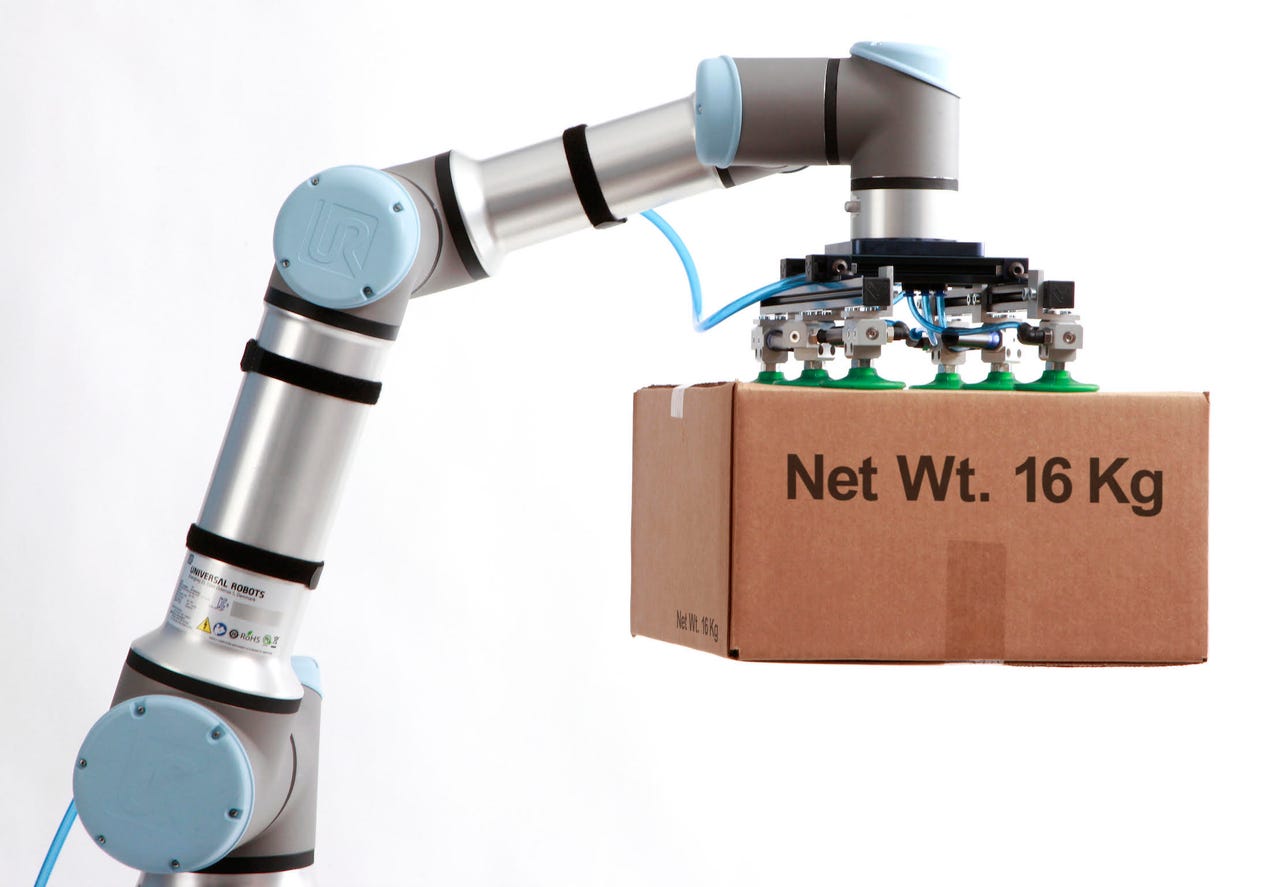Cage-free robots are now doing industry's heavy lifting


At the China International Industry Fair (CIIF) tradeshow in Shanghai this morning, Universal Robots is displaying a brand new collaborative robot capable of lifting a 35 pound payload. That may not sound like much, but it signals a major trend in the automation industry and an important milestone in the way humans and robots work together: Operating alongside people and outside cages, collaborative robots (often just called cobots) are now performing manufacturing tasks that were previously the domain of caged off industrial machines.
Collaborative automation has, in just the last decade, changed how a variety of light industry sectors operate, including components manufacturing, various kinds of scientific benchwork, and light manufacturing of products as disparate as eyeglasses and soft goods. The robots, designed with an abundance of sensors to enable them to operate safely alongside humans, have typically consisted of multiple degree of freedom robot arms that sit on a bench top and perform light, repeatable tasks.
It's no wonder. Since the 1950s, industrial automation existed exclusively in restricted environments, and robots operated in fenced off zones away from people. The idea of being within striking distance of a working robot was unthinkable. Market adoption of cobots, which use force sensors and machine vision, among other sensing technologies, to avoid striking humans or shut off in the event of a strike, demanded those robots start small.
So far, the safety record for cobots has been impeccable. That's helped prime the market for larger robots capable of greater payloads. And that, in turn, has helped the collaborative automation sector expand into new markets and adopt heavier manufacturing and logistics roles.
Enter Universal Robots, which is the industry leader in cobots by unit sales. The company's new UR16e combines a 35 pound payload with a reach of about 35 inches.
"In today's uncertain economic climate manufacturers need to look at flexible solutions to stay competitive," said Jürgen von Hollen, President of Universal Robots. "With UR16e, we meet the need for a collaborative robot that can tackle heavy-duty tasks reliably and efficiently. This launch significantly expands the versatility of our product portfolio and gives manufacturers even more ways to improve performance, overcome labor challenges, and grow their business."
Combined with high-accuracy repeatability of +/- 0.05 mm, the robot seems well-suited to automating tasks like heavy-duty material handling, heavy part handling, palletizing, and machine tending. These all represent new horizons for collaborative automation, and it signals the days may be numbered for traditional industrial robots that operate beside cages. It also means human workers in a variety of industries should get used to sharing space with machines.
Of course, the expansion of these robots into new industries is only a sure thing if the safety record remains strong. Internationally, the industry still operates via a patchwork of regulation. In the U.S. in particular, enforcement tends to operate reactively, only after incidents occur.
But UR remains confident in its safety record -- and with 37,000 cobots on the job around the world, the company has a right to boast. The way things are headed, the next generation of industrial robots that build cars may well be cage-free.